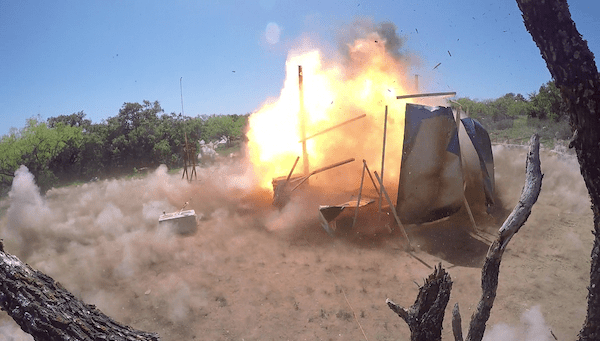3D printing speeds up development of warheads.
It was only a matter of time before engineers would use 3D printing technologies to develop weapons. The debate on 3D printed guns has already been hotly discussed. Now, the ethics of warheads created using additive manufacturing are to be called into question again, following testing of a 3D printed warhead in Burnet, Texas.
Created by Orbital ATK for the US Defense Department, the 50lb warhead has been designed for hypersonic applications, i.e. those that travel faster than sound.
The team set up initial testing in Burnet in order to measure the warhead’s fragmentation. The design of the device includes three out of five of its components created using a 3D printer.
Pat Nolan, the Vice President and General Manager, explained that the warhead was designed to withstand higher speeds and temperatures.
“Right now we’re spending our own to position ourselves to play when the customer comes around and says, ‘Have this need in this large set. How can you help me?’ And so it just helps us with our suite of capabilities to answer questions once we have that demonstration in hand.”
Orbital ATK engineers spent just two months developing the warhead. The company says that this is six weeks shorter compared to traditional manufacturing methods.
Richard Truitt, the company’s Program Manager told Defense News:
“We are really happy to do this test with additive manufactured parts because it’s going to tell us, does that actually function the way a normal component would.”
He acknowledged that the final model may need further improvements, but matched the company’s expectations.
“If you walk around it, you will see it’s not a cylinder, it’s got some really complicated dimensions. Getting that part in that dimension in a very short time is nearly impossible,” he said.

Testing the warhead in Texas. (Image: Orbital ATK)
Faster and cheaper, but what are the ethical implications of 3D printed weapons?
The use of 3D printing applications to develop warheads makes it faster and likely cheaper to create the devices. This may also place the US at the forefront in terms of the global arms race. Although it is questionable whether there is a necessity for it.
James Acton, a physicist at Carnegie Institute’s Nuclear Policy Program certainly believes there is. He adds that Russia may be working toward hypersonic weapons as well which could present “a significant security threat to the US and its allies.”
Although additive manufacturing shows once again that it can significantly speed up the manufacture of items across a wide variety of industries, its use to develop weapons for mass destruction should be debated and arguably more tightly regulated.
Source: Defense News
Website: LINK

